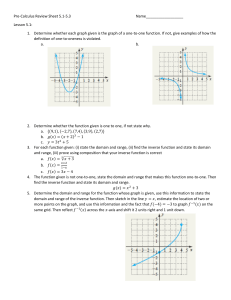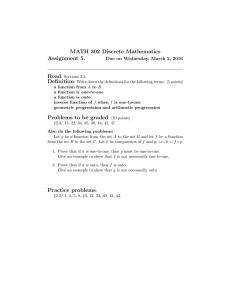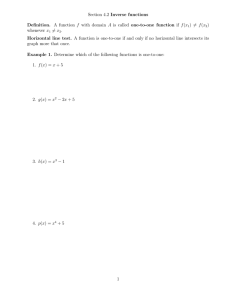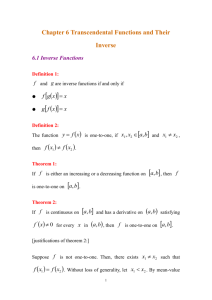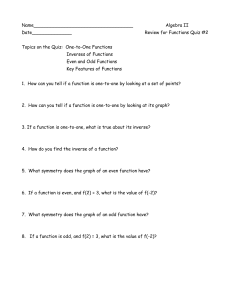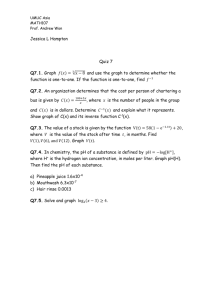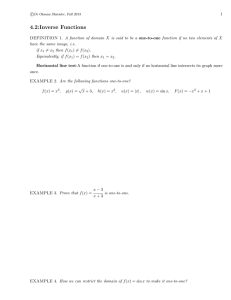Inverse Functions: Definition, Theorems, and Examples
advertisement
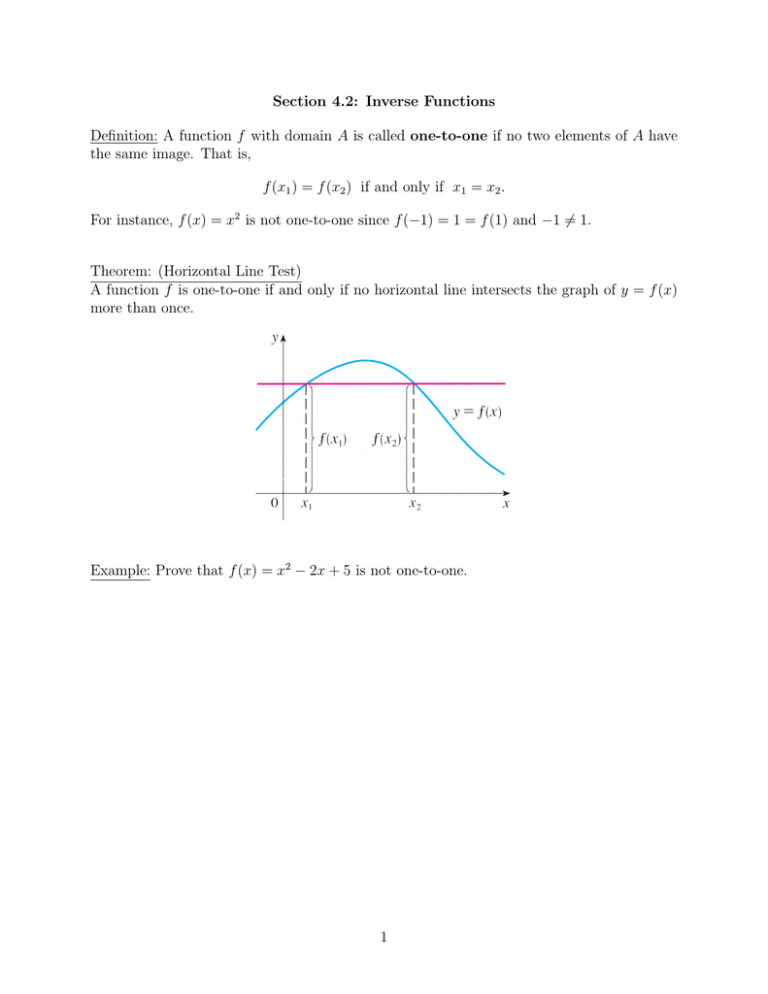
Section 4.2: Inverse Functions Definition: A function f with domain A is called one-to-one if no two elements of A have the same image. That is, f (x1 ) = f (x2 ) if and only if x1 = x2 . For instance, f (x) = x2 is not one-to-one since f (−1) = 1 = f (1) and −1 6= 1. Theorem: (Horizontal Line Test) A function f is one-to-one if and only if no horizontal line intersects the graph of y = f (x) more than once. Example: Prove that f (x) = x2 − 2x + 5 is not one-to-one. 1 Definition: Let f be a one-to-one function with domain A and range B. Then its inverse function f −1 has domain B and range A and is defined by f (x) = y ⇐⇒ f −1 (y) = x. Moreover, the inverse function satisfies f −1 (f (x)) = f (f −1 (x)) = x. How to Find the Inverse of a One-to-One Function: Suppose that f is a one-to-one function. 1. Let y = f (x). 2. Interchange x and y. 3. Solve this equation for y. The solution is y = f −1 (x). Example: For each function, show that f is one-to-one and find its inverse. (a) f (x) = 5 − 4x3 2 (b) g(x) = (c) f (x) = √ 2 + 5x x−3 x+3 3 Note: The graph of f −1 is obtained by reflecting the graph of f about the line y = x. Example: The graph of a function f is given below. Sketch the graph of f −1 . Theorem: (Derivative of an Inverse Function) Suppose that f is a one-to-one differentiable function with inverse f −1 . Then the inverse function is differentiable and 1 (f −1 )0 (x) = 0 −1 . f (f (x)) Example: If f (4) = 5 and f 0 (4) = 2, find (f −1 )0 (5). 4 Example: Find (f −1 )0 (a) for each function. (a) f (x) = x5 − x3 + 2x, a = 2 (b) f (x) = √ x3 + x2 + x + 1, a = 2 (c) f (x) = 3 + x + ex , a = 4 5

